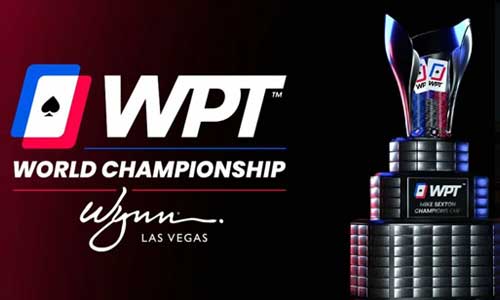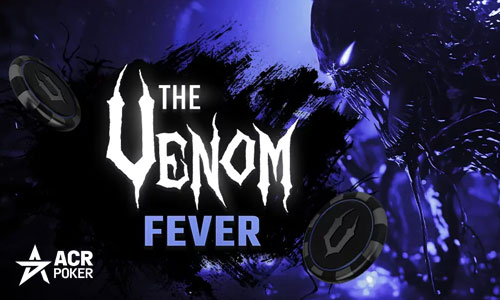How Poker Pros Use the ICM to Win Tournaments

ICM exists in tournaments where the prize pool is shared among multiple players — even if you win all the chips, you don’t win all the money.
In the traditional 9-man Sit and Go, three players walk out with money in their pockets. The winner is typically paid 50% — 30% goes to the runner-up, while the one who finishes third gets the comfort prize of 20% of the total prize pool. In other words, when the last hand of the tournament is dealt, each chip is worth only half of its initial value.
This means that it’s essential that you hold off to your chips, especially if you’re going all-in or betting a significant amount of your stack. Therefore, in these tournaments, you shouldn’t play too aggressive. If you lose your last chip — you’re out and, as long as you have a single chip, there’s still hope for a comeback.
There are some math principles behind ICM which we’ll try to explain a bit deeper in this post. Stay tuned!
What Is ICM?
ICM basically converts players’ stacks in chips into their money equity. It’s presented as a percentage of the remaining or total prize pool. The Model can be used to represent the monetary values of making different decisions within a game. In essence, ICM is a function of two values — the chip-stacks within the tournament and a list of payouts. It ignores things like position, skill advantages, and the size of the blinds.
ICM equity can be nicely explained in the context of a final table payout. It allows each player to find out what part of the prize pool would belong to them if the tournament had concluded at that moment. Once you have read more about ICM why not try your hand on some of our online legal poker sites.
CardPlayer
ICM in the Early Phase of the Sit and Go
In a traditional 9-man SnG, each player starts with 1,500 chips and has an expected share of the prize pool of 11.1% — this is the ICM value of their chips.
If two players go all-in against each other in the first orbit, then the winner walks out of that standoff with 3,000 chips, while the remaining seven players still have 1,500 chips each. We’ll put aside blinds and bets to make the math simpler.
If we would put these odds into an ICM calculator, then it would show that the winner of the initial standoff now has an ICM value of 20.3%. As you can see, his ICM value didn’t increase that much, even though he doubled his stack.
So, if, for example, you’re in a late position with an AK, and someone rises stakes from early position with a 75 BB stack, you should consider folding. And if it were a cash game, there’s no chance you would be intimidated when having something like an AK in your hands.
ICM on the Bubble of the Sit and Go
The importance of ICM increases with the reduction in the number of remaining players, and the closer you get to the payout. For example, in a 9-man SNG, when you come to the top 4 stages, each player has an ICM value of 25% of the prize pool, assuming that the stacks are equal.
If one player beats another in an all-in standoff, then their ICM value is now 38.3%, only increasing by 53% although he doubled his stack. At this stage of the event, blinds and bets are usually a lot larger compared to the players’ stacks, which consequently makes the situation a bit better for the player who doubled up his stack.
However, be careful about risking all your chips in this situation and do it only if the blinds are huge like they usually are in hyper-turbo tournaments. If you are the one shoving, then it’s likely that everyone else will fold.
So, although it might seem counter-productive, jamming is usually less risky than calling. This is also why good players usually play less risky in tournaments when they run out of chips. If you use the traditional 3BB as you would perhaps do in cash games, you will lose too many chips when push comes to shove. And you would also have to fold because of ICM considerations.
Since getting called usually leads to bust (unless you have a good hand), you should also consider who other players are.
Just like in cash games, many rookies don’t like to fold in Sit and Go events, so trying to bullying them with a nice bluffing hand like A6 hearts is not a wise decision. If they call you with J8 because they think you are a bully, you would probably lose money when ICM is taken into account.
Final Thoughts
Although ICM can be quite a useful tool, it does come with certain limitations, like, for example, the fact that it doesn’t take future playability into account. That said, you should avoid big pots against the chip leader if you’re not too heavy in the stack department yourself. On the other hand, if you gain a substantial advantage early on, you’ll become that bully who’s hated by everybody.
In the early stages of big tournaments, it may be possible that it’s better to ignore the ICM and adopt the “go win or go home” mentality. However, when the bubble phase approaches, you must take ICM into account, if your goal is to win cash in poker tournaments.
If you have any inquiries regarding this topic, please let us know in the comment section below. We would be more than happy to help you solve any information dilemmas you may have.
Hi, I am the Chief Editor of top10pokersites.net, this site is dedicated to all thing poker. I have been working around the poker industry for the last 15 years, with different brands. The main purpose of this site is to keep you uptodate with the industry and offer you the best deals around.










